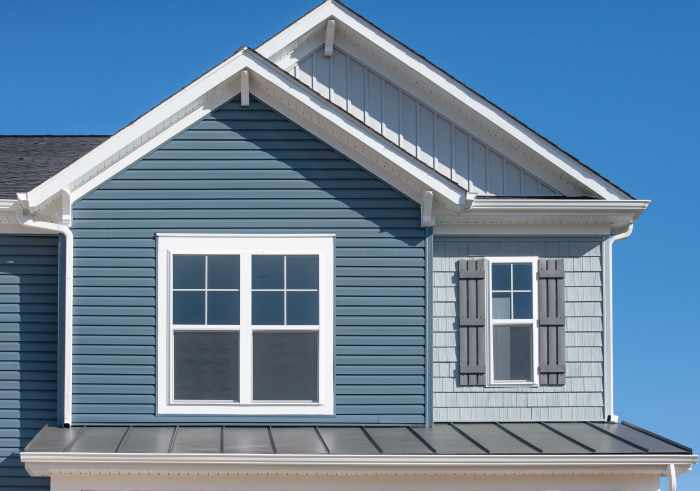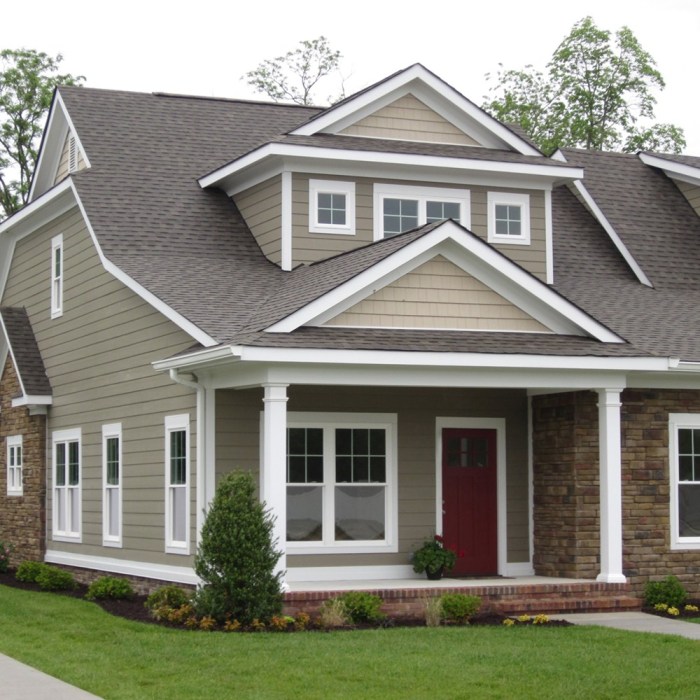Exploring Exterior Siding and Trim: A Comprehensive Guide
Delve into the world of exterior siding and trim as we uncover the different materials, styles, installation processes, and maintenance tips that make your home's exterior truly stand out.
Types of Exterior Siding

When it comes to choosing exterior siding for your home, there are several options to consider. Each type of siding material has its own set of pros and cons, as well as specific maintenance requirements and durability. Here are some common types of exterior siding along with their characteristics:
Vinyl Siding
Vinyl siding is a popular choice for homeowners due to its affordability and low maintenance. It comes in a variety of colors and styles, making it versatile for different architectural designs. However, vinyl siding can crack or fade over time, and may not be as durable as other materials.
Fiber Cement Siding
Fiber cement siding is known for its durability and resistance to rot, fire, and pests. It can mimic the look of wood or stucco but requires less maintenance. However, fiber cement siding can be more expensive than other options and may require professional installation.
Wood Siding
Wood siding offers a natural and rustic look that many homeowners appreciate. It can be painted or stained in various colors to match the aesthetic of the home. However, wood siding is prone to rot, insect damage, and requires regular maintenance such as painting or staining to protect it from the elements.
Brick Siding
Brick siding is a timeless option that provides durability and insulation benefits. It can withstand harsh weather conditions and requires minimal maintenance. However, brick siding can be costly to install and may not be suitable for all architectural styles.
Stone Veneer Siding
Stone veneer siding offers the look of natural stone at a fraction of the cost. It is lightweight and easy to install, making it a popular choice for homeowners looking to enhance their home's exterior. However, stone veneer siding may not be as durable as real stone and can chip or crack over time.
Popular Trim Options

When it comes to exterior trim options, there are several common materials that are used to enhance the aesthetic appeal and functionality of a property.Exterior trim can be made from various materials such as wood, PVC, composite, aluminum, and fiber cement.
Each material has its own unique characteristics and benefits that cater to different preferences and needs.
Wood Trim
Wood trim is a classic choice that offers a traditional and elegant look to a home. It can be easily customized and painted to match the overall design of the house. However, wood trim requires regular maintenance to prevent rotting, warping, and insect damage.
PVC Trim
PVC trim is a low-maintenance option that is resistant to moisture, rot, and insects. It is easy to install and does not require painting. PVC trim is durable and long-lasting, making it a popular choice for homeowners looking for a hassle-free solution.
Composite Trim
Composite trim combines wood fibers and recycled plastics to create a durable and weather-resistant material. It offers the look of wood without the maintenance issues. Composite trim is available in various colors and styles, providing versatility in design options.
Aluminum Trim
Aluminum trim is lightweight, durable, and resistant to rust and corrosion. It is a sleek and modern option that adds a contemporary touch to the exterior of a home. Aluminum trim is easy to install and requires minimal maintenance.
Fiber Cement Trim
Fiber cement trim is a sturdy and fire-resistant material that mimics the look of wood without the drawbacks. It is resistant to rot, insects, and moisture, making it a durable choice for exterior trim. Fiber cement trim is available in different textures and finishes to suit various architectural styles.Overall, each trim material has its own advantages and considerations to take into account when choosing the right option for your home.
Consider the aesthetics, durability, maintenance requirements, and cost when selecting the best trim for your property.
Installation Process
Installing exterior siding is a crucial step in enhancing the appearance and protecting the structure of your home. Proper installation is key to ensuring durability and longevity of the siding. Here are the general steps involved in the installation process along with tips for a successful outcome.
General Steps for Installation
- Prepare the surface: Remove any old siding, repair damaged areas, and ensure the surface is clean and smooth.
- Install moisture barrier: Apply a moisture barrier to prevent water infiltration and protect the structure.
- Add insulation: Proper insulation improves energy efficiency and helps regulate indoor temperature.
- Measure and cut siding: Accurate measurements and cuts are essential for a seamless installation.
- Secure siding: Use appropriate nails or screws to secure the siding to the exterior wall.
- Finish with trim: Install trim pieces around windows, doors, and corners for a polished look.
Tips for a Proper Installation
- Follow manufacturer instructions: Always refer to the manufacturer's guidelines for installation to ensure proper techniques and materials are used.
- Use quality materials: Invest in high-quality siding materials and insulation to ensure durability and performance.
- Pay attention to details: Properly seal joints, corners, and seams to prevent water penetration and air leaks.
- Consider professional help: If you're unsure about any step of the installation process, it's best to seek help from experienced professionals.
Importance of Insulation and Moisture Barriers
Proper insulation and moisture barriers are essential components of exterior siding installation. Insulation helps improve energy efficiency, regulate indoor temperature, and reduce heating and cooling costs. A moisture barrier prevents water infiltration, which can cause damage to the structure and create mold and mildew issues.
Ensuring the correct installation of these elements will not only enhance the performance of the siding but also contribute to the overall comfort and longevity of your home.
Maintenance and Repairs
Maintaining your exterior siding and trim is crucial to preserving the overall look and functionality of your home. By following recommended practices and addressing common issues promptly, you can extend the lifespan of your siding and trim.
Recommended Maintenance Practices
Regular maintenance can help prevent costly repairs and ensure the longevity of your exterior siding and trim. Here are some recommended practices:
- Inspect your siding and trim regularly for any signs of damage, such as cracks, rot, or peeling paint.
- Clean your siding and trim at least once a year using a mild detergent and water to remove dirt, mold, and mildew.
- Trim any overgrown vegetation near your siding and trim to prevent moisture buildup and potential damage.
- Check and repair any caulking or seals around windows, doors, and corners to prevent water infiltration.
- Paint or stain your siding and trim every few years to protect against the elements and maintain its appearance.
Common Issues and How to Address Them
Despite regular maintenance, issues may still arise with your exterior siding and trim. Here are some common problems and how to address them:
- Rotting Wood:Replace any rotted wood immediately to prevent further damage and ensure structural integrity.
- Cracked Siding:Seal cracks with caulk or replace damaged siding to prevent water intrusion and mold growth.
- Peeling Paint:Scrape off old paint, prime the surface, and repaint to protect your siding and trim from the elements.
- Mold and Mildew:Clean affected areas with a mixture of bleach and water, and address any underlying moisture issues.
Tips for Extending Lifespan Through Regular Upkeep
By following these tips, you can help extend the lifespan of your exterior siding and trim:
- Address minor issues promptly before they escalate into larger problems.
- Keep your siding and trim clean and free from debris to prevent damage and deterioration.
- Monitor the condition of your siding and trim throughout the year, especially after severe weather events.
- Consult with a professional if you're unsure how to address a specific issue or if repairs are beyond your expertise.
Outcome Summary
In conclusion, understanding the nuances of exterior siding and trim is key to maintaining the beauty and functionality of your home. With the right knowledge and care, you can ensure that your exterior remains stunning for years to come.
Essential FAQs
What are some common types of exterior siding materials?
Common types include vinyl, wood, fiber cement, and metal. Each has its own advantages and considerations for durability and maintenance.
What materials are typically used for exterior trim?
Exterior trim is often made of wood, PVC, or composite materials. These options offer different aesthetics and functionalities.
What are important steps to ensure a proper installation of exterior siding?
Proper insulation, moisture barriers, and following manufacturer guidelines are crucial for a successful and long-lasting installation.
How can I extend the lifespan of my exterior siding and trim?
Regular maintenance, addressing issues promptly, and keeping up with upkeep tasks can significantly prolong the life of your siding and trim.




